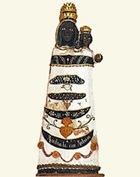

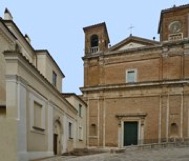
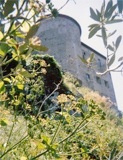
The church and monastery here, which were built above the medieval walls, belonged originally to the Jesuits.
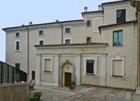
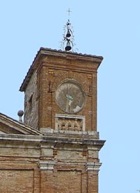
Art from Sant’ Angelo
The frescoes (17th century) in Sant’ Angelo, which included those in the lunettes that were attributed to the Giuseppe Cesari, il Cavalier d’ Arpino, have been destroyed. Most of its altarpieces are now in the Pinacoteca.
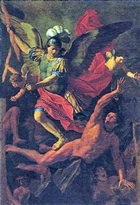
-
✴Christ on the Cross (17th century)
-
This altarpiece, which was documented in the sacristy of the church, was transferred to the Civic Collection but subsequently lost.
-
✴St Michael defeating the Devil (1677)
-
This altarpiece from the church, which is signed and dated by inscription, is now among those from Sant’ Angelo in the Pinacoteca (illustrated here).
